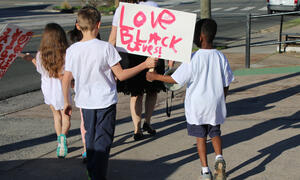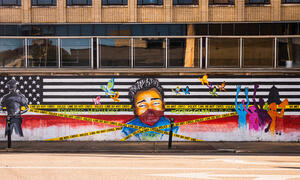2,006 Results
Teaching MLK With the Social Justice Standards

Lead Your Own Training: The Social Justice Standards

Supporting Student Action for Social Justice
Recent headlines point to all kinds of student action, from tackling climate change to advocating for more equitable schools. But those of us who work with students know they're doing what young people have always done: leading the way toward necessary change. In this edition of The Moment, we offer resources to help you support your students when they stand up against injustice, fight for equity and take the lead in shaping a better future for all of us.
- Existence Is Resistance: Supporting Student-led Social Change
- Dear Future Leader
- Latinx Leaders Tomorrow
Making Our Stance on Social Justice Education Explicit
Tadpoles Lead My Students Across the Social Divide
Why Civics Education Needs Social Justice
From an early age, each of us must navigate numerous social institutions, many of which were designed to perpetuate centuries-old inequities. For us to move in those spaces with power and agency, civic knowledge, skills and dispositions are essential. But alarming trends reveal a sharp decline in civics competency among adults in the United States, and participation in places that bring people together to solve common problems has withered, too. Civics education needs a critical social justice lens so people can fulfill the potential of a multiracial and inclusive democracy.
- Why Civics Needs Social Justice Education
- What Is Social Justice Education?
- Social Justice Standards
Educators and Their #Community: Finding Solidarity on Social Media

Existence Is Resistance: Supporting Student-led Social Change

The Power of Place: Art as a Tool for Social Justice
